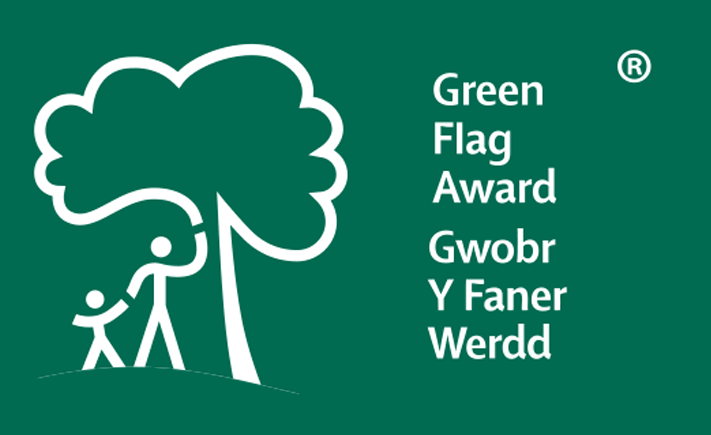Statement of significance for Bute Park
Bute Park is one of the largest urban parks in the UK, with a landscape ranging from 19th century gardens and planting in the south, adjacent to Cardiff Castle, to sports pitches and informal woodland in the north. The park is not just significant on historic grounds, but the combination of historic, environmental, horticultural and other factors make this a unique and important site at a local, regional, national and international scale.
- Primary significance
The elements of primary significance relating to Bute Park are:
a) Links to the Bute Family (along with Cardiff Castle)
Bute Park, along with Cardiff Castle, is significant in its strong links with the Bute Family as one of a number of estates across the UK owned by the family between the mid eighteenth and mid twentieth centuries. Although the estate was never more than a temporary home for the family – the fact that the family’s nineteenth century wealth was built on coal mined from the Welsh Valleys and exported from the docks in Cardiff (that had been built by the Bute family) means that there is a very specific link to Cardiff and in particular Bute Park and Cardiff Castle, in which the family invested heavily to create the landscape and architecture that is now very much part of Cardiff’s distinctive heritage.
Scope of significance: International
b) Visual setting for Cardiff Castle
Bute Park provides the characteristic setting for many of the best known portraits of Cardiff Castle. Early views, where the foreground of West Street and the surrounding fields focus attention on the Castle itself, date back to 1678 (Francis Place, Cardiff from the west). The same image is repeated in a number of classic portraits of the town and castle during the eighteenth and nineteenth centuries, particularly the Buck engravings, 1741 and 1748. The laying out of the park in the late nineteenth century formalised the view up and down Cooper’s Field both from and towards the castle as one of the primary viewpoints within the designed landscape.
The view of Cardiff Castle from Cooper’s Field, with the Acer and Camellia collection in the foreground and the clock-tower rising from behind mature park trees is now one of the iconic images of Cardiff, alongside the Millennium Stadium, City Hall and Cardiff Bay.
Scope of significance: National
c) Designed Landscape
The laying out of the Castle Grounds by Andrew Pettigrew, between 1873 and 1903, is the only known example of a designed layout by this highly respected, nineteenth century gardener and horticulturalist. Despite the absence of any surviving master plan for the estate, the broad layout of the grounds today reflects the structure indicated on the 1901 Ordnance Survey plan with its characteristic features of expansive lawns, clumps of trees, wooded areas and under-storey planting.
From descriptions of contemporary garden visits, the Pettigrew landscape style was understated, very different to the high Victorian layouts of the mid nineteenth century and more akin to the landscape style of the American designer Frederick Law Olmsted, whose work was referred to by Pettigrew in his written and spoken presentations on design. The landscape takes advantage of the linear nature of the site, utilising this to best effect through the strong north – south axis, culminating in the dramatic silhouette of Cardiff Castle dominating the south eastern corner. The presence of the dock feeder on the eastern side of the park increases the natural buffer along the eastern boundary, reducing and even eliminating the impact of North Road on the park and creating an expansive, tranquil and beautiful place in the heart of the city.
The lack of any original layout plans for the gardens has left them vulnerable to intervention and modification through the passage of time and there is a particular conflict between the late Victorian / Edwardian layout and the more recent twentieth century Arboretum collection, established during the late 1940s.
Scope of significance: National
d) Blackfriars site
The mediaeval Blackfriars Friary dates from the twelfth century. The site is one of the few mediaeval friaries in Wales where the site layout is known and largely displayed – and is second only to Haverfordwest Priory in this respect. Its significance is elevated due to the fact that Cardiff’s other Friary – the Greyfriars – was developed in the 1960s and is now beneath the ‘Capital Tower’ on the corner of Greyfriars Road. The Blackfriars site is the most obvious presence within the park of a history predating the Bute ownership of the castle and estate.
The partially restored and conserved visible remains of the Friary are not mediaeval, having been interpreted and reconstructed during the late nineteenth century as a result of archaeological excavation works carried out under instruction from the Third Marquess of Bute. It is this visible reconstruction that makes the site unique in Wales, and one of only a few sites of its kind in the UK. The re-creation of the Friary layout appears to follow the principles of the Society for the Protection of Ancient Buildings (SPAB) which was formed in 1877 around the time that the excavations were being carried out. The archaeological investigations carried out in advance of and during the restoration works have significantly increased the understanding of the interpreted site.
Scope of significance: National
e) The Arboretum
The Arboretum in Bute Park was developed by Bill Nelmes, Chief Parks Officer, from the late 1940s onwards. The tree collections were planted in species groups, initially within the landscape structure of the park, although the effects of WW2 food production had probably simplified some of the original layout. Planting dwindled in the 1960s, but was revived with a tree donation scheme in the 1980s, when the collections were extended and the planting was more widespread. New and replacement trees were added to the collections throughout the HLF restoration project and continue through a successful tree donation scheme in the post-HLF project period.
The site’s tree collection database contains over 4,000 individually catalogued trees, though less remain in situ. Many are extremely rare and probably exist on a limited number of sites within the UK. There are currently 39 champion trees in the collection[1] (the widest or tallest of their type in the UK) – but these are not necessarily the oldest trees – some of the rarest trees and a significant number of champions are contained within the more recent plantings.
The collection is unique in a public park. It was surveyed in 2005 by Dr Owen Johnson of the Tree Register of the British Isles (TROBI), who has described the park as ‘unique in public parks in Britain or Ireland for its scope and its quantity of rare material. Assessed in terms of the Tree Register's statistics, Bute Park has nearly four times as many Champion Trees as its nearest rival among public parks in Britain (Roath Park), and three times as many trees noted as being of national importance for stature or rarity. ’
Scope of significance: National
- Other significance
The elements of other significance relating to Bute Park are detailed below. The combination of these with the elements of primary significance elevates the status of Bute Park in terms of its overall significance as an urban park within the UK.
a) History of the site
This history of the land now referred to as Bute Park is intimately associated with the history of Cardiff as a settlement. Although no major Roman remains have been discovered on the site, it is likely that the site of the Roman river crossing and associated road lies within the park.
Mediaeval settlement along West Street continued through into the eighteenth century and is well documented. The alignment of the millstream, parallel to the River Taff, and its weirs, fisheries and mills, are all recorded. The development of the three bridge locations – the mediaeval, eighteenth and nineteenth century bridges, and concurrent movements of the Taff, provide a fascinating insight into the town’s struggle with the natural elements.
A reminder of the link with the export of coal can be seen in the creation of the dock feeder along the mill stream line, which still feeds water to Cardiff’s docks today and the layout of the southern park is the legacy of the wealth created by the coal export industry. Even the layout of the Blackweir Recreation Ground still provides clues about its agricultural roots.
The process of unravelling the site history is still ongoing,. This makes the site particularly valuable to historians and academics. The history of the site has been interpreted through the HLF project but further interpretation is possible. Given the right clues, the site can be easily understood because the park has never been built upon, and the spaces within the site allow visitors to appreciate the site’s associations with Cardiff Castle and the way in which it has developed.
Scope of significance: Regional
b) Hidden Archaeology
The lack of built development in the park has meant that much of the underground archaeology, which has never been properly investigated, is still likely to be ‘in situ’. Roman, mediaeval, post mediaeval and eighteenth century finds have been discovered within the park, although only a limited number of structures have been located and partially excavated[2]. Initial geophysical survey work along the eighteenth century line of West Street, carried out 2004/5, suggested that many of the buildings on the street are still present below ground, further evidence of this was discovered when a mature Holm oak in the area fell exposing masonry remains. Significant buried structures and high status items not previously found outside Cardiff Castle were also discovered during archaeological investigations associated with the re flooding of the Mill Leat In 2013.
Scope of significance: Regional
c) Built Structures
Bute Park contains a number of built structures dating back to the mid and late nineteenth century and associated with the park’s use as the private grounds to Cardiff Castle. These are primarily associated with access to and enclosure of the grounds. These structures include the iconic Animal Wall along the southern boundary, the gateway entrance at West Lodge and the lodge itself, the gateway entrance north of Cardiff Castle, the boundary wall along North Road and collection of houses and former farm buildings at Blackweir Farm. At Blackweir, the houses and cottages are now in private ownership, as is the northern-most lodge at Gabalfa, in Gabalfa Woods.
All of these buildings and structures are significant in the fact that they help to retain the ‘estate’ character of the park, distinguishing it from other public parks in Cardiff with a more municipal character. In particular, the Animal Wall, although not seen from within the park, is one of Cardiff’s most enduring images, and it creates a unique and tantalising southern boundary of universal appeal.
Scope of significance: Local
d) Ecology and SINCs
Bute Park is a city centre park, yet it contains or abuts a number of Sites of Importance for Nature Conservation (SINCs):
SINC 17: Gabalfa Woods
A secondary woodland with mature Beech (Fagus sylvatica) and Alder (Alnus glutinosa) which originally bordered the lower reaches of the Glamorganshire Canal and now contains Drooping Sedge (Carex pendula).
SINC 6: Blackweir and the Dock Feeder
Secondary woodland managed as ornamental parkland with a varied natural and introduced ground flora and the Dock Feeder Canal and associated waterway vegetation. The woodland supports many woodland birds, including Bullfinch (Pyrrhula pyrrhula) and the Dock Feeder supports a colony of Beautiful Demoiselle damselflies (Calopteryx virgo) near Cardiff Castle.
The Northern sections of the Bute Park Arboretum are also included within this listing, and contain a very small remnant of Waxcap grassland, including the rare UK BAP species Date-coloured Waxcap (Hygrocibe spadicea).
SINC 97: The River Taff
The river is important for migratory fish, Otters (Lutra lutra), wildfowl and bankside vegetation and acts as a main wildlife corridor, attracting fish eating birds such as Little Egret (Egretta garzetta), Kingfishers (Alcedo atthis) and Goosander (Mergus merganser).
The park is also home to all three UK woodpeckers, the Green woodpecker (Picus viridis), Great spotted woodpecker (Dendrocopos major) and the more rare Lesser spotted woodpecker (Dendrocopos minor), which is on the 2006 IUCN ‘Red List’ of threatened species due to its declining numbers.
The park supports colonies of Tawny Owls (Strix aluco) and Pipistrelle bats (Pipistrellus pipistrellus) and on summer evenings, Noctule bats (Nyctalus noctula) and Daubentons bats (Myotis daubentonii) can also be seen along the river.
Scope of significance: Local
e) Community use, events and filming
The park is a popular with pedestrian and cyclist access from the suburbs of Riverside and Canton to the city centre, and counters at entrances indicate the park receives approximately. 2,500,000 visits each year.
Pettigrew Tea rooms, The Summerhouse and The Secret Garden cafés, developed and leased during the restoration project have significantly helped to develop the sense of community in the park.
Bute Park does not function as a traditional, local, community park. It has a citywide catchment of users, supplemented by tourists, giving it a much wider range of users than any other park in Cardiff and increasing its significance as a major visitor attraction in the city. Bute Park has been ranked in the Top 5 of “things to do in Cardiff” according to TripAdvisor for several years and maintains this at the time of writing.
Bute Park is a city centre urban park with environmental qualities more often found on the urban fringe or in a country park; however it is also an important venue for community activity and local, regional and national events.
Bute Park hosts event throughout the year. These events are charged different rates e.g. at a charity rate Tier 1 (lower charity) rate or Tier 2 (higher charity) rate] or the commercial rate. Although small in number (7 of 31 events or 22% in 2023/24), the commercial rate events generate 80%+ of the event income for the year. This hopefully demonstrates that the quantity of commercial events within the park is at an acceptable level but also how critical those events are to balancing the park’s budget.
In 2023/24 the park hosted a growing programme of charity runs and walks supporting: Cancer Research Wales, Big Moose, City Hospice, Cancer Research, Armed Forces Charity, Pride, Krishna Cymru, Alzheimer’s Memory Walk, Velindre Cancer Centre, MS Society, Parkinson’s UK and Movember.
The park is also a location popular for filming which contributes a small amount to the annual budget.
Scope of significance: Regional
f) Educational potential
The educational potential of Cardiff’s parks is being increasingly acknowledged and promoted. Bute Park, by virtue of its facilities, location, qualities and associations with Cardiff’s history has unique educational potential both within the city and in the South Wales region. The site and its education centre provide a venue for all levels of learning: basic skills, national curriculum delivery, adult education, specialist training, degree level coursework and post graduate research.
The wide range of themes that can be covered within the park (basic numeracy and language skills, linguistic courses, environmental, social and cultural education, history, biology, geography, ecology, botany, ornithology, archaeology, landscape development, horticultural, arboricultural, fine turf management training, art, photography, journalism etc.) makes the park significant in terms of its educational potential
Scope of significance: Local
g) Health and Wellbeing
The city-centre, highly accessible location of Bute Park plus the fact it is free to enter and has such rich natural content makes it an ideal Health & Wellbeing resource.
The park is used both formally and informally in ways that help promote health & wellbeing of visitors. On the informal side, people use the park for a casual lunchtime stroll and quiet sit on a bench to watch the world go by, or use of the trim trail as part of their regular fitness routine. On the more formal side people seek out opportunities to promote their health & wellbeing on a group basis by joining one of the sessions offered by parks staff or external providers.
It is our intention to further-develop and raise awareness of the walks park staff offer. The Bute Park Ranger already runs monthly lunchtime walks for staff at Cardiff University. We hope to develop the market for such use further plus reach the council’s own staff e.g. by encouraging workers from City Hall and Cardiff Castle to join a lunchtime walking group in Bute Park.
Scope of significance: Local
[1] Number of champion trees in December 2019
[2] Glamorgan and Gwent Archaeological Trust, March 2001








